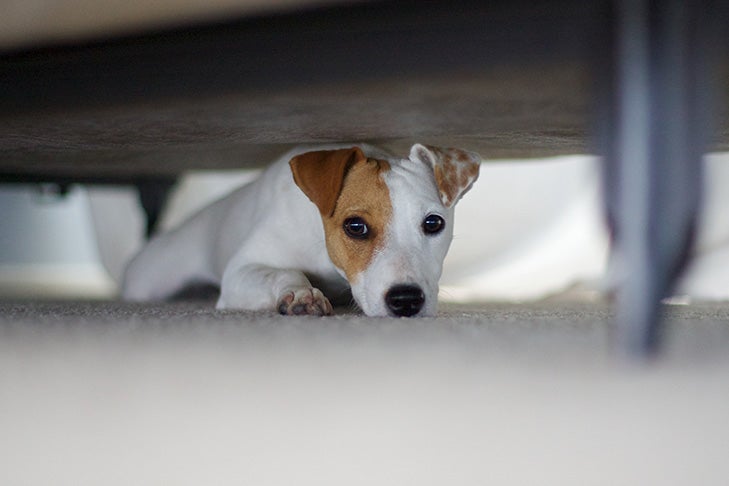
If there was one winner during the past year of social distancing and staying home to stop the spread of COVID-19, it was dogs. Pups across the world relished the constant presence of their people and the extra attention that comes with it. But there’s also a flip side to that coin: Once we all go back to work and spend less time at home, many dogs are likely to experience separation anxiety.
Separation Anxiety in Dogs
Separation anxiety is an umbrella diagnosis for dogs who display anxious or problematic behaviors—like constant barking, urinating in the house, or destructive chewing—when left alone or separated from the person to whom they are most attached. It can be triggered by sudden changes in schedule that result in family members being away from home more than the dog has become used to.
Common situations that can cause an adult dog to develop separation anxiety include someone returning to work after a long period at home, such as maternity leave or extended unemployment, or children returning to school at the end of the summer. So as entire families return to work and school once the COVID-19 stay-at-home restrictions are lifted, dogs everywhere are likely to develop separation anxiety.
What Causes Separation Anxiety in Dogs?
While it has long been believed that separation anxiety was based on a dog’s attachment to the owner, a recent study suggests that dogs are more complex than we realized. Although some dogs may indeed suffer “pain of separation” from their owners, many who are diagnosed with separation anxiety are acting out in response to frustration. This can stem from a variety of underlying causes, including fear of something in the house, a desire to be outside, being bothered by outside noises, or pure boredom.

Preparing Your Dog for a Return to Normal
Whether your dog misses your presence or becomes unbearably bored once you’re no longer there all day to keep them entertained, you can reduce the likelihood they’ll develop separation anxiety.
Here are some steps you can take to ease your pup back into old routines.
- Social distance from your dog: If your dog is constantly by your side, begin restoring a sense of independence. Encourage them to spend more time in their own bed, outside in a fenced yard by themselves, or in their crate while you perform a task that draws your attention away from them. When your dog settles down and relaxes, wait a couple of minutes and then praise them and give them a treat.
- Work up to longer distances and periods of absence: Start by going into another room and leaving your dog alone for a few minutes. Gradually increase the amount of time your dog is left alone, while also working up to going outside without them. If your local restrictions or guidelines allow it, go on walks or long drives around the neighborhood without your dog to get them accustomed to you leaving home again.
- Ease back into your routine: A few days before you have to return to work outside the home, start getting up at the time you normally would and go through your normal morning routine, even leaving the house for a little while at the time you would normally leave for work. That way it won’t be as big a deal to your dog to see you go when the actual day arrives for your return to the outside world.
- Provide plenty of exercise: Give yourself enough time before you need to leave for the day to take your dog for a walk or engage in at least 15 minutes of vigorous play. This exercise will help your dog burn off excess energy and help them stay relaxed and calm throughout the day.
- Provide interactive toys: Puzzle toys and chew toys can help prevent your dog from getting bored and can also help comfort and distract them from other possible anxiety triggers, such as strange noises or activities happening outside.
- Don’t be anxious for your dog: Dogs pick up on your mood and take their cue from you about how they should feel about new situations. The more you stay relaxed and behave like everything is normal, the more likely your dog will be to follow your lead and accept it when it’s time for you to go.
Whether or not your dog was prone to separation anxiety before, easing them back into old routines will likely prevent them from developing it when you return to your life outside the home.
The AKC is here to help owners with questions and concerns about COVID-19 and dogs. Find answers to your questions, plus at-home activity ideas, training tips, educational resources, and more on our Coping With COVID-19 hub.

